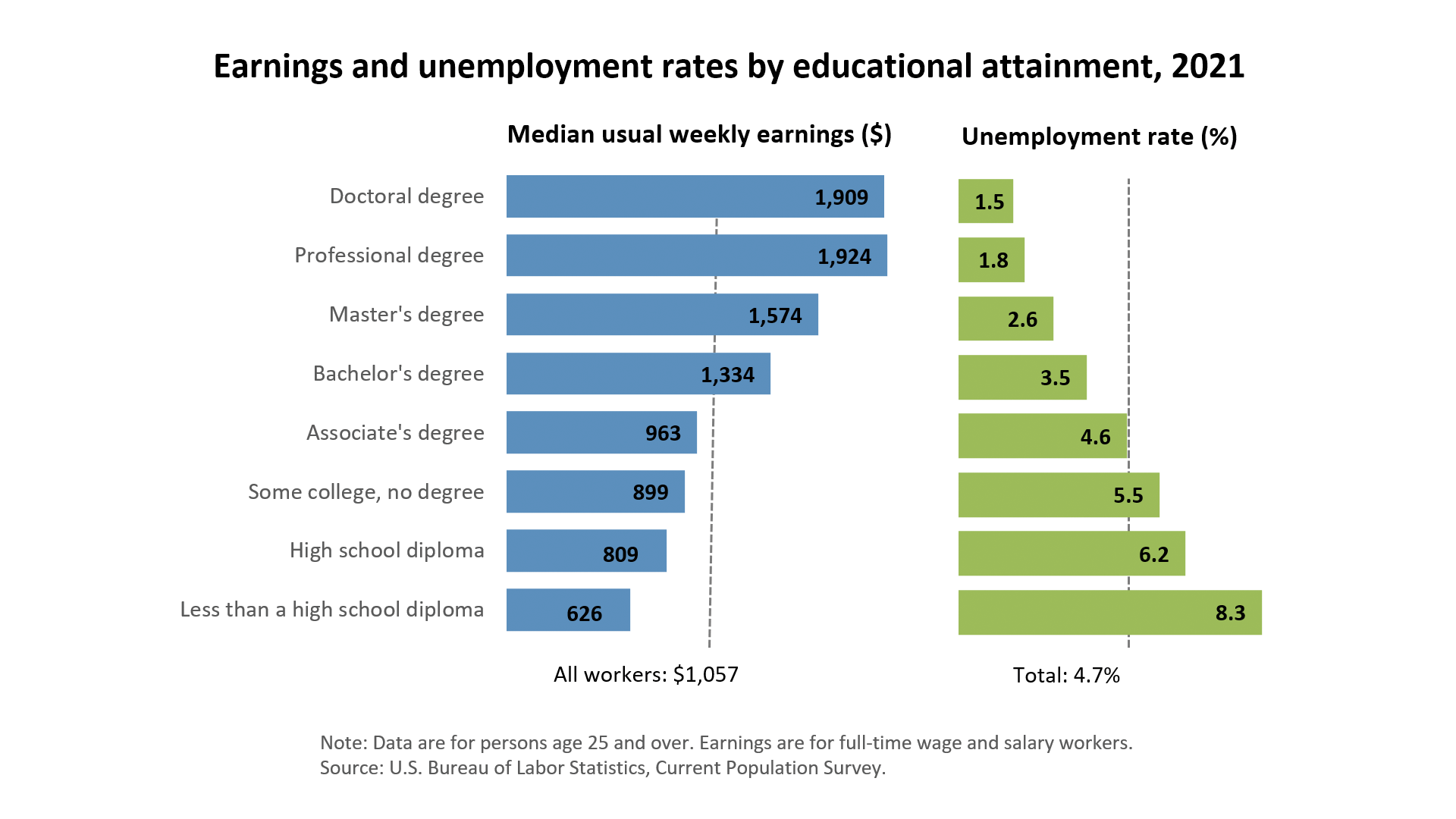Employers offer education benefits (e.g., tuition assistance and reimbursement) to help employees continue to learn and acquire new skills in an increasingly competitive and degree-demanding job market. These benefits provide the employees who use them with advantages in several dimensions of wellness. Most obviously, they are good for financial wellness. According to the U.S. Bureau of Labor Statistics, unemployment rates decrease and median weekly earnings increase for each level of educational attainment.

Education benefits also stand to combat extant inequities. As Levi Pulkkinen states in his article in The Hechinger report, educational benefits are:
Put forward as a powerful tool in correcting disparities that deny nearly half of Black Americans, half of Native Americans and most Latinos a shot at postsecondary education, any amount of which makes people far more likely to live a healthy life, earn a family-sustaining wage and shape their communities by volunteering or engaging politically.
Additionally, these education initiatives are good for the organizations that provide them as much as they are good for employees. They can help attract and retain talent looking to improve their skills and acquire degrees or certifications. Additionally, highly skilled employees are likely to perform their jobs more efficiently and effectively, ultimately saving companies far more than they spent on the benefits to begin with.
Four Reasons Why Education Benefits Are Underutilized
Despite the multitude of ways in which education can benefit employees, some of the education benefits provided by businesses are significantly underutilized. For instance, The Wall Street Journal reports that less than ten percent of workers at companies that provide tuition reimbursement make use of the offering. If these benefits are to serve as more than a symbol of an organization’s efforts to address the educational needs and desires of its employees, the lack of utilization must be addressed. Combating this issue first requires identifying some of the most common reasons that employees are reluctant to make use of the benefits on offer. Four of these reasons are identified below.
1. Employees are unaware of the benefits available to them.
Employees won’t use benefits that they don’t know exist. According to a 2021 Voya consumer survey, 35% of respondents reported that they did not fully understand any of the employee benefits they enrolled in. This suggests that many employees may be either unaware of the education benefits at their disposal or do not understand how they work.
2. Employees are unaware of how making use of the benefits might improve their lives.
Some individuals lack confidence in the value of college education. According to a recent Gallup poll, the percentage of adults who believe that college education is “very important” has dropped by an average of 19% since 2013. Perceptions that college is very important declined most heavily (by 33%) among young adults aged 18-29. This implies that many workers may be reluctant to take advantage of the education benefits that are available to them because they are skeptical of the value of receiving additional education.
3. Employees lack the financial means to take advantage of education benefits.
Organizations can offer up to $5,250 in tax free education assistance each year. Many programs far exceed this price. Moreover, the payment structure of many education initiatives leaves programs below this price point beyond the reach of many workers. For instance, many companies offer tuition reimbursement, meaning that employees must front the costs of tuition. For some employees, this is not an option. As Dan Ash, an experimental psychologist who helped found Kentucky’s Metropolitan College, states in his interview with The Hechinger Report, “if I don’t have $600, you can offer me $1 million in reimbursement and I still can’t go to school.”
4. Employees do not have the time or energy to take advantage of education benefits.
Many educational programs are exceedingly time consuming, with some taking years to complete at full-time enrollment. They also demand a significant amount of mental energy. After a full day’s work, employees may find that they have minimal cognitive resources left to devote to studying or completing homework assignments. When being a parent or caregiver is added into the mix, finding time or energy for additional tasks becomes nearly impossible. Aa result, many education benefits may go to waste because the programs that they are linked with are too time-consuming and energy-demanding.
How To Make Education Benefits More Impactful
Employers can increase the rate at which their employees take advantage of their education initiatives by taking the following two steps.
1. Educate employees on the benefits of education.
As was noted above, not everyone believes in the value of higher education. Workers who are skeptical of the benefits of college may be insufficiently interested in the education benefits that many organizations offer. This can be counter-acted by providing workers with access to information on the variety of ways in which additional education can be worth the time and energy, especially as it relates to additional opportunities that will be afforded to them within their current organization.
2. Diversify the range of education benefits on offer.
There are more ways of meeting your employees’ educational needs than by lessening the cost of two- or four-year degree programs. Organizations can offer “micro-credentials” or “nanodegrees,” which are mini qualifications that demonstrate skills, knowledge, and/or experience in a particular subject area or capability. These courses can be completed with far less time, energy, and money, and often provide workers with skills that are more immediately and obviously useful than their macro degree brethren. Additionally, employers might consider offering student loan forgiveness, though they should carefully consider the tax implications of doing so.












